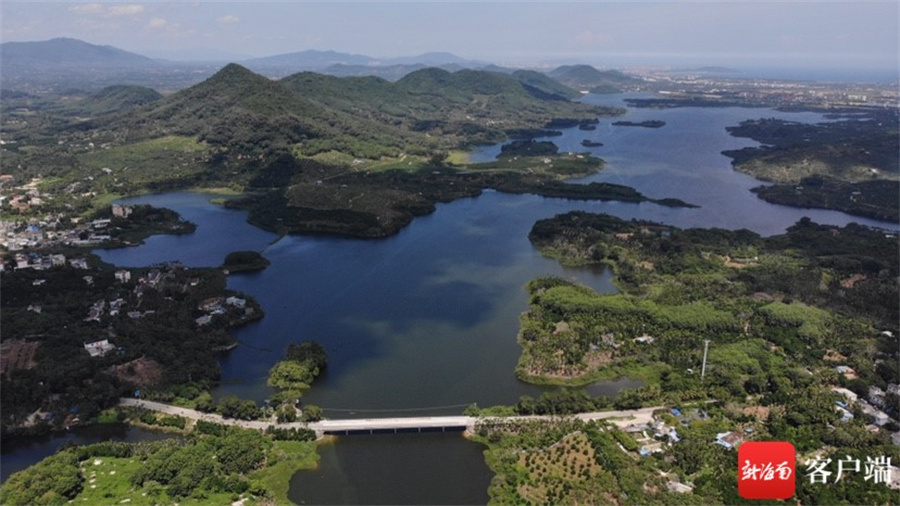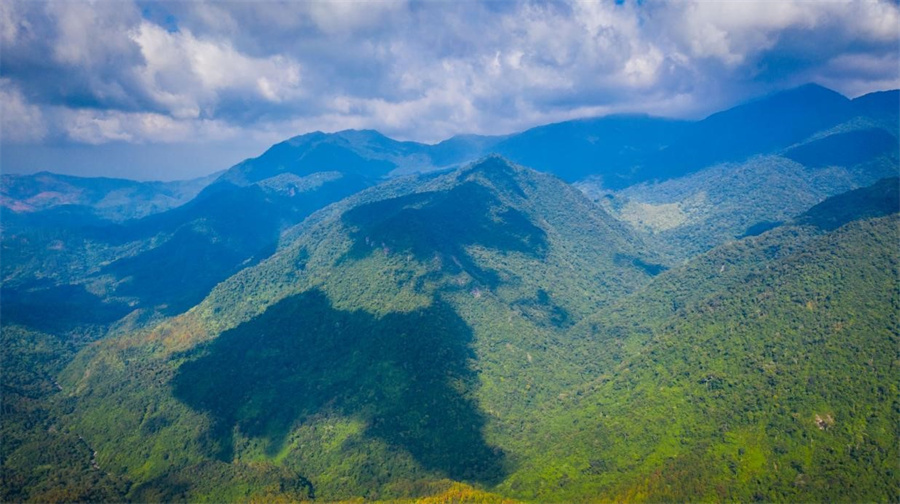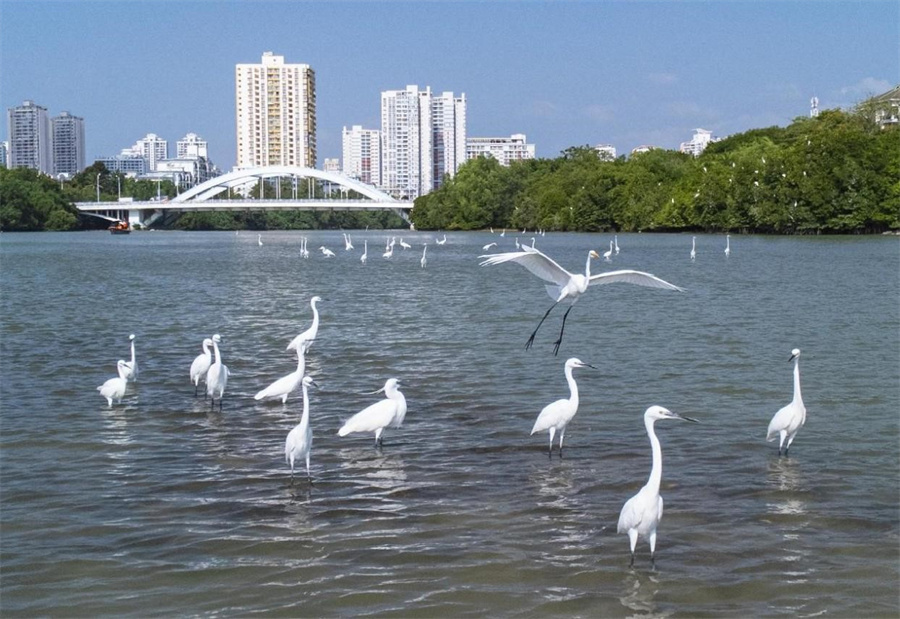Hainan explores compensation mechanism for better conservation of rainforest
Originating from the Angriling Mountain in Baoting Li and Miao autonomous county, south China's Hainan province, the Tengqiao River winds its way for over 50 kilometers. After passing through the Chitian Reservoir in Haitang district, Hainan province's Sanya, it flows into the sea via the Tengqiao Port.
As a famous coastal tourist city in China, Sanya has a high demand for water, and the Chitian Reservoir is the city's main source of drinking water. However, Sanya, downstream of the reservoir, only has jurisdiction over a small part of the reservoir's watershed, while 89 percent of the reservoir's water comes from Baoting.

Photo shows the Chitian Reservoir. [Photo from the Xinhainan app]
On the other hand, Baoting county has 227.75 square kilometers within the boundaries of the National Park of Hainan Tropical Rainforest. It has a relatively weak economy, but it bears most of the responsibility for environmental management of the Chitian Reservoir.
Faced with this conflict, Sanya and Baoting have been exploring the possibility of establishing a cooperative governance mechanism.
The two places signed a compensation agreement for three consecutive years from 2019 to 2021. The agreement stipulated that if the quarterly water quality measurements at the Sanya-Baoting boundary section of the Chitian Reservoir met the required standards, Sanya would provide compensation funds to Baoting. This arrangement followed a "quarterly assessment, year-end settlement" approach.
In August 2021, the two places reached another agreement, designating the period from 2022 to 2024 to be the first assessment period. Relevant departments of Hainan, Sanya, and Baoting will contribute 330 million yuan ($45.38 million), 180 million yuan, and 90 million yuan respectively to form a 600-million-yuan fund for the ecological protection and compensation of the Chitian Reservoir basin. The assessment will be based on three dimensions: water quality, water quantity, and actions, with the ecological condition as the standard for allocating the fund to Sanya and Baoting.
Through years of intensive remediation, the overall ecological environment of the Chitian Reservoir basin has been greatly improved. The surface water of the reservoir has been graded to Class II, up from Class III in the country's five-tier water quality system.
As the main source and upstream catchment area for Hainan's major rivers, the National Park of Hainan Tropical Rainforest safeguards the province's primary drinking water sources. Using the Chitian Reservoir's cross-regional ecological compensation mechanism as a model, Hainan is exploring a basin-wide horizontal ecological protection compensation system across the province.

Photo shows the Wuzhishan section of the National Park of Hainan Tropical Rainforest. [Photo provided by the management bureau of the National Park of Hainan Tropical Rainforest]
This approach follows the principle that areas upstream protect water resources, while areas downstream provide compensation. The system has been implemented across several watersheds, encompassing nine cities and counties that are either fully or partially within the Hainan Tropical Rainforest National Park area.
"After moving out of the mountains, everything has become so convenient," said Huang Jincao, a villager from Shuixian village in Shiling township, Baoting county.
Two years ago, in response to the national park's ecological relocation policy, 357 villagers from Shuixian and Shidong villages moved out of the mountains and into bright, new resettlement homes.
Today, the new cement roads are wide and flat, whose both sides are lined with rows of houses. Nearby shops are bustling with activity, and not far away is a lively farmers' market. New energy charging stations have even been set up along the roadside.
After the ecological relocation was completed, how was the livelihood ensured for villagers who had lived off the land for generations?
"The government allocated one shop to each relocated household and 5 mu (about 0.33 hectares) of farmland per person. Plus, there's a production subsidy of 500 yuan per mu annually for five years," said Liang Di, a villager from Shidong village.
"The government has implemented direct forest ecological benefit compensation. Through this direct subsidy, villagers in areas surrounding important ecological zones receive appropriate compensation, which increases their income," an official in Baoting county told People's Daily.

Photo shows egrets on the Sanya River in Sanya, south China's Hainan province. [People's Daily Online/Ye Longbin]
Besides, Hainan continues to promote forest ecological benefit compensation and natural forest protection subsidies, implementing vertical ecological protection compensation. So far, these two forms of ecological compensation have achieved full coverage in the National Park of Hainan Tropical Rainforest. In 2023, central and provincial government funds allocated 223.74 million yuan to seven branch offices of the management bureau of the National Park of Hainan Tropical Rainforest for non-commercial forests and natural forest resource protection projects.
Moreover, local authorities are engaging residents' enthusiasm to jointly protect the green mountains. "Through various means such as signing cooperative protection agreements and creating eco-friendly public service positions, we're attracting local residents to participate in the management of the national park," said Zhong Shijin, director of the Wuzhishan branch office of the management bureau of the National Park of Hainan Tropical Rainforest.
"Wuzhishan city currently has appointed 11 municipal-level forest chiefs, 529 village-level forest chiefs, and nearly 1,000 forest rangers, most of whom come from households that have been lifted out of poverty," Zhong added.
As of August 2023, the seven branch offices of the management bureau of the National Park of Hainan Tropical Rainforest have collectively hired over 2,300 conservation staff to participate in the protection and management of non-commercial forests and natural forests. Of these, more than 1,300 are local residents.
























